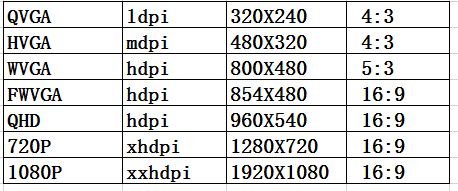編輯:關於Android編程
在Activity初始化的過程中,會調用Activity的attach方法,在該方法中會創建一個PhoneWindow的實例,將其作為Activity的mWindow成員變量。
在執行完了Activity#attach()方法之後,會執行Activity#onCreate()方法。
我們在Activity#onCreate()方法中會就調用setContentView()方法,我們將一個Layout的資源ID傳入該方法,調用了該方法之後就將layout資源轉換成ViewGroup了,之後就可以調用findViewById()查找ViewGroup中的各種View。
Activity#setContentView()源碼如下所示:
public void setContentView(@LayoutRes int layoutResID) {
getWindow().setContentView(layoutResID);
initWindowDecorActionBar();
}
首先通過getWindow()方法得到了mWindow,其實它是一個PhoneWindow類型的對象,我們之前提到PhoneWindow是在Activity#attach()方法中被初始化的。然後調用了PhoneWindow#setContentView()方法。
PhoneWindow#setContentView()源碼如下所示:
public void setContentView(int layoutResID) {
if (mContentParent == null) {
//installDecor()方法會調用generateDecor()和generateLayout()方法
installDecor();
} else if (!hasFeature(FEATURE_CONTENT_TRANSITIONS)) {
mContentParent.removeAllViews();
}
if (hasFeature(FEATURE_CONTENT_TRANSITIONS)) {
final Scene newScene = Scene.getSceneForLayout(mContentParent, layoutResID,
getContext());
transitionTo(newScene);
} else {
mLayoutInflater.inflate(layoutResID, mContentParent);
}
mContentParent.requestApplyInsets();
final Callback cb = getCallback();
if (cb != null && !isDestroyed()) {
//最後觸發內容變化的回調
cb.onContentChanged();
}
}
該方法傳入了一個Activity的layout資源layoutResID,該資源就代表了Activity中的content內容,理解了此處content所代表的意義之後,要說一下PhoneWindow中有兩個比較重要的成員變量mContentParent和mContentRoot,這兩個字段都是ViewGroup類型。mContentParent從字面上看就是content的parent,即Activity的layout是要放到mContentParent中去的。mContentRoot從字面上看就是content的root,即content的根結點,一般情況下,mContentParent是放置在mContentRoot中的。即mContentRoot > mContentParent > content。關於如何實例化mContentRoot 、mContentParent 和 content,後面會詳細說明。
PhoneWindow#setContentView()方法中會調用installDecor()方法。
PhoneWindow#installDecor()方法的源碼如下所示:
private void installDecor() {
if (mDecor == null) {
//創建DecorView
mDecor = generateDecor();
mDecor.setDescendantFocusability(ViewGroup.FOCUS_AFTER_DESCENDANTS);
mDecor.setIsRootNamespace(true);
if (!mInvalidatePanelMenuPosted && mInvalidatePanelMenuFeatures != 0) {
mDecor.postOnAnimation(mInvalidatePanelMenuRunnable);
}
}
if (mContentParent == null) {
//根據features生成Activity的layout資源的父節點
mContentParent = generateLayout(mDecor);
...
}
}
installDecor()中會調用generateDecor()和generateLayout()方法。
PhoneWindow#generateDecor()會創建DecorView,其源碼如下所示:
protected DecorView generateDecor() {
return new DecorView(getContext(), -1);
}
執行完了generateDecor()之後,就會執行generateLayout(),其源碼如下所示:
protected ViewGroup generateLayout(DecorView decor) {
// Apply data from current theme.
TypedArray a = getWindowStyle();
...
//根據Theme和Style計算features
if (a.getBoolean(R.styleable.Window_windowNoTitle, false)) {
requestFeature(FEATURE_NO_TITLE);
} else if (a.getBoolean(R.styleable.Window_windowActionBar, false)) {
// Don't allow an action bar if there is no title.
requestFeature(FEATURE_ACTION_BAR);
}
if (a.getBoolean(R.styleable.Window_windowActionBarOverlay, false)) {
requestFeature(FEATURE_ACTION_BAR_OVERLAY);
}
if (a.getBoolean(R.styleable.Window_windowActionModeOverlay, false)) {
requestFeature(FEATURE_ACTION_MODE_OVERLAY);
}
if (a.getBoolean(R.styleable.Window_windowSwipeToDismiss, false)) {
requestFeature(FEATURE_SWIPE_TO_DISMISS);
}
...
// Inflate the window decor.
//根據features計算layoutResource,此處的layoutResource表示要插入到DecorView中的子節點
int layoutResource;
int features = getLocalFeatures();
// System.out.println("Features: 0x" + Integer.toHexString(features));
if ((features & (1 << FEATURE_SWIPE_TO_DISMISS)) != 0) {
layoutResource = R.layout.screen_swipe_dismiss;
} else if ((features & ((1 << FEATURE_LEFT_ICON) | (1 << FEATURE_RIGHT_ICON))) != 0) {
...
layoutResource = R.layout.screen_title_icons;
} else if ((features & ((1 << FEATURE_PROGRESS) | (1 << FEATURE_INDETERMINATE_PROGRESS))) != 0
&& (features & (1 << FEATURE_ACTION_BAR)) == 0) {
layoutResource = R.layout.screen_progress;
} else if ((features & (1 << FEATURE_CUSTOM_TITLE)) != 0) {
...
layoutResource = R.layout.screen_custom_title;
} else if ((features & (1 << FEATURE_NO_TITLE)) == 0) {
...
layoutResource = R.layout.screen_action_bar 或 R.layout.screen_title;
} else if ((features & (1 << FEATURE_ACTION_MODE_OVERLAY)) != 0) {
...
layoutResource = R.layout.screen_simple_overlay_action_mode;
} else {
// 不需要裝飾,直接用最簡單的資源文件即可
layoutResource = R.layout.screen_simple;
}
mDecor.startChanging();
//將計算到的layoutResource轉換為實際的View,並將其插入到DecorView中,將其作為成員變量mContentRoot
View in = mLayoutInflater.inflate(layoutResource, null);
decor.addView(in, new ViewGroup.LayoutParams(MATCH_PARENT, MATCH_PARENT));
mContentRoot = (ViewGroup) in;
//計算出的layoutResource對應著mContentRoot,它其中肯定有一個ID叫做ID_ANDROID_CONTENT的ViewGroup
//從中找到該Group,賦值給contentParent,contentParent就表示我們Actiivy的layout資源文件的父節點
ViewGroup contentParent = (ViewGroup)findViewById(ID_ANDROID_CONTENT);
if (contentParent == null) {
throw new RuntimeException("Window couldn't find content container view");
}
...
mDecor.finishChanging();
//contentParent會賦值給成員變量mContentParent
return contentParent;
}
generateDecor()這個方法從字面上看就知道是要產生layout,那麼要產生哪些layout呢?其實這個方法就是為了創建我們之前說的mContentRoot和mContentParent。generateDecor()方法的返回值就是mContentParent,我們具體分析一下代碼的執行過程。
generateDecor()方法會首先根據Theme和Style,會多次調用requestFeature()方法,計算特性features。
然後會根據計算出的特性features,要計算一個layout資源layoutResource,layoutResource就是對應著mContentRoot。features具備的特性不同,layoutResource的值也就不同,layoutResource的可能取值有:
com.android.internal.R.layout.screen_swipe_dismiss.xml
com.android.internal.R.layout.screen_title_icons
com.android.internal.R.layout.screen_progress
com.android.internal.R.layout.screen_custom_title
com.android.internal.R.layout.screen_action_bar
com.android.internal.R.layout.screen_title
com.android.internal.R.layout.screen_simple_overlay_action_mode
com.android.internal.R.layout.screen_simple等。
在計算出layoutResource之後,會將計算到的layoutResource轉換為實際的View,將其作為成員變量mContentRoot,並將其插入到DecorView中,也就是說mDecor是mContentRoot的父節點,此時PhoneWindow中的View樹:mDecor -> mContentRoot
之後會調用findViewById()方法查找ID為ID_ANDROID_CONTENT的View。PhoneWindow是繼承自Window的,PhoneWindow的findViewById()是在Window中定義,其源碼如下所示:
public View findViewById(@IdRes int id) {
return getDecorView().findViewById(id);
}
由此我們可以看出PhoneWindow的findViewById()方法其實就是從mDecor中查找View。ID_ANDROID_CONTENT也是在Window類中定義的,如下所示:
public static final int ID_ANDROID_CONTENT = com.android.internal.R.id.content;
其實無論上面計算的layoutResource是哪個layout,該layout中都有一個id為content的ViewGroup。
舉例來說,我們有一個MainActivity,其直接繼承自Activity,Application和MainActivity都沒有設置任何Theme和Style,當App運行在Android 6.0系統上的時候,得到的layoutResource是com.android.internal.R.layout.screen_action_bar,具體如下所示:
<framelayout android:id="@android:id/content" android:layout_height="match_parent" android:layout_width="match_parent">
</framelayout>
我們可以看到com.android.internal.R.layout.screen_action_bar中有一個android:id="@android:id/content"的FrameLayout,該FrameLayout就是mContentParent。
當generateLayout()執行完畢後,installDecor()方法也就執行完了。
這樣PhoneWindow#setContentView(layoutResID)中會執行下面的代碼:
mLayoutInflater.inflate(layoutResID, mContentParent);
此處的layoutResID是我們Activity的資源文件,比如R.layout.activity_main,此處將該文件inflate成具體的View,並將其放入到mContentParent中。
之後還會通過代碼cb.onContentChanged()觸發內容變化回調的執行。
這樣Activity#setContentView()也就執行完了,假設我們的R.layout.activity_main中只有一個RelativeLayout,那麼通過hierarchyviewer查看到的View樹如下所示:
View樹的根結點是PhoneWindow$DecorView類型的,此處的$表示DecorView是PhoneWindow的一個內部類,該DecorView也就是PhoneWindow中的字段mDecor。screen_action_bar定義的ActionBarOverlayLayout就是PhoneWindow的mContentRoot,其是mDecor的子節點。screen_action_bar中內部id為content的FrameLayout就是PhoneWindow中的mContentParent,其是我們Activity的layout的父節點。
我們回過頭來再思考一下DecorView這個類,英文decor的意思其實就是裝飾,也就是說這是一個起到裝飾的類,除了裝飾,DecorView還要作為我們自己layout的容器。那到底裝飾了什麼東西呢?我個人認為,上圖中除了綠色文本標識的其他的View都可以看做裝飾,因為這些View是根據features特性的不同而創建的,如果需要有Action Bar的特性,那麼就裝飾上一個View作為Action Bar的容器;如果不需要Action Bar,但需要顯示title,那麼就裝飾上一個View作為title的容器,等等。
 把商品添加到購物車的動畫效果(貝塞爾曲線)
把商品添加到購物車的動畫效果(貝塞爾曲線)
如圖:參考:Android補間動畫,屬性動畫實現購物車添加動畫思路:確定動畫的起終點在起終點之間使用二次貝塞爾曲線填充起終點之間的點的軌跡設置屬性動畫,ValueAnim
 Android學習(45) -- 自定義控件(9) 下拉刷新 (添加footer)
Android學習(45) -- 自定義控件(9) 下拉刷新 (添加footer)
樣式效果 1、創建底部的布局layout_footer.xml 2、在自定義的ListView中 初始化話FooterVi
 Android Scroller簡單用法
Android Scroller簡單用法
1.知識點 在了解Scorller類之前應先知道View的ScrollTo(int x, int y)/ScrollBy(int x, int y)之間的區別,了解什
 Android繪圖機制與處理技巧
Android繪圖機制與處理技巧
一.屏幕的尺寸信息1屏幕參數屏幕大小 指屏幕對角線的長度,通常使用”寸”來度量,例如4.7寸手機 5.5寸手機等.分辨率 分辨率是指手機屏幕的像素